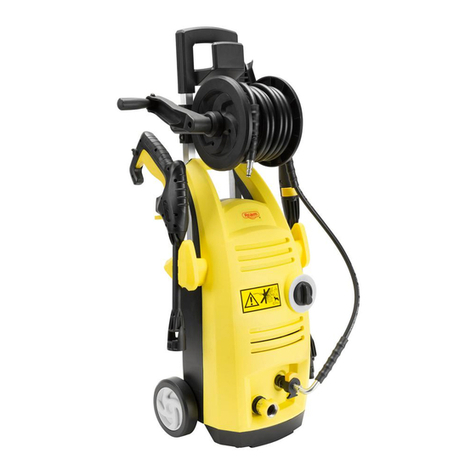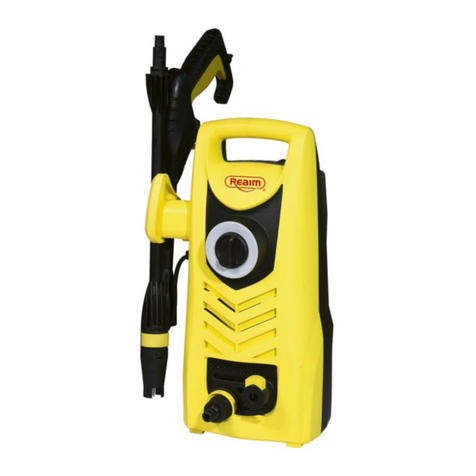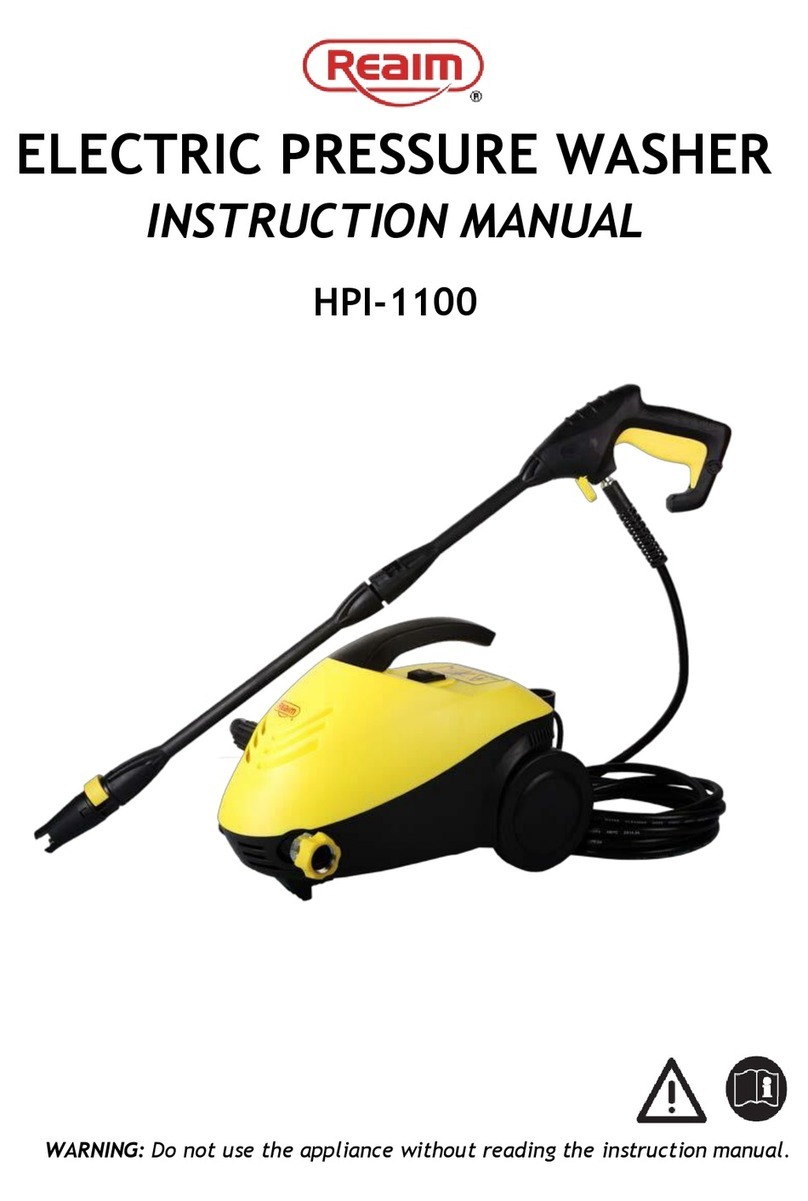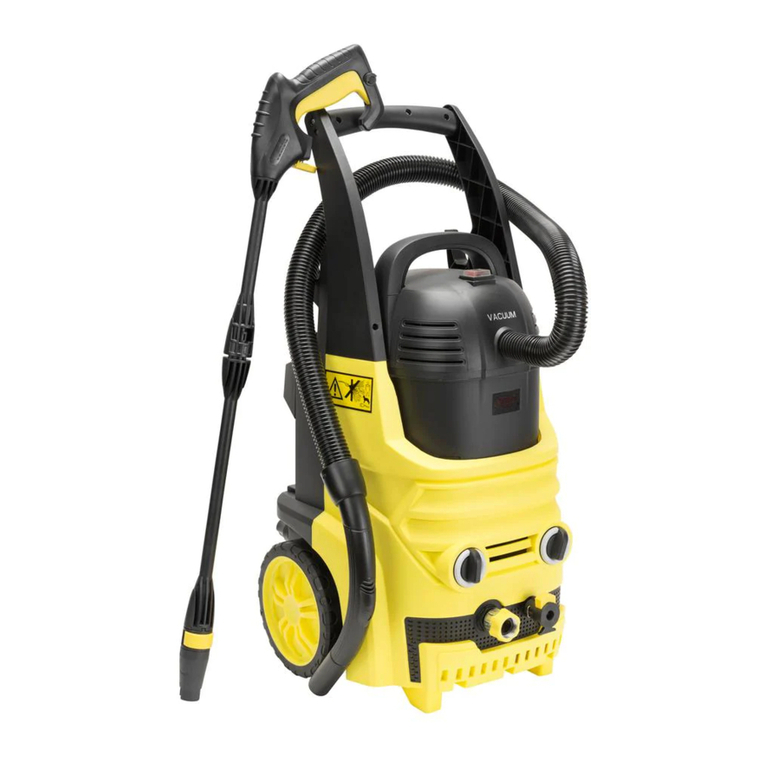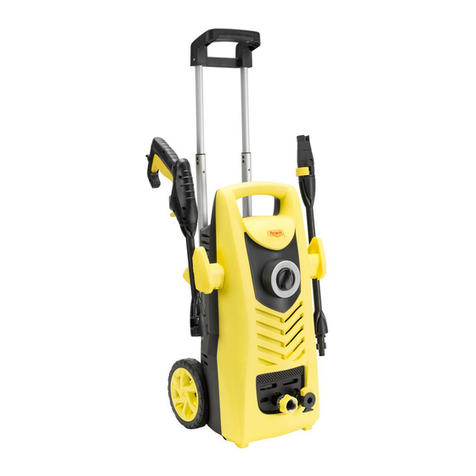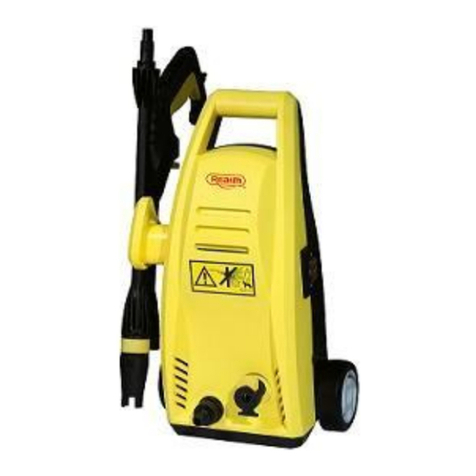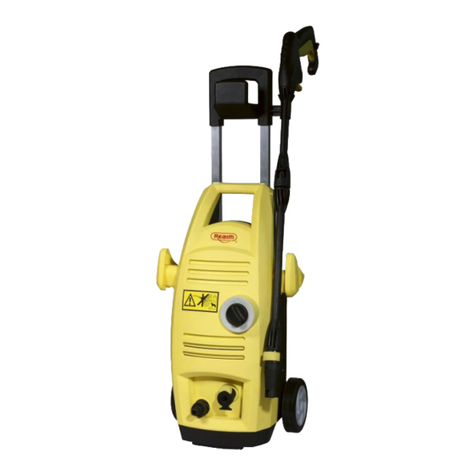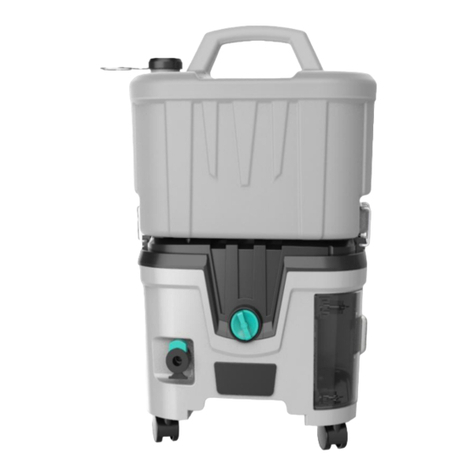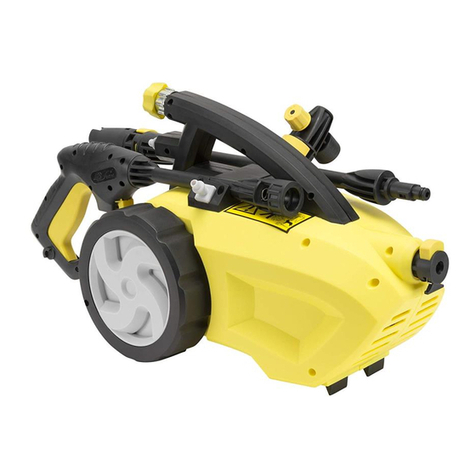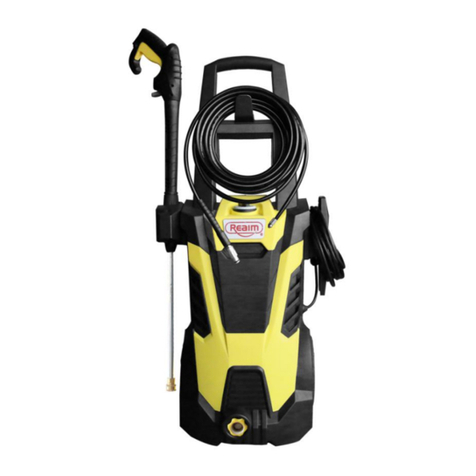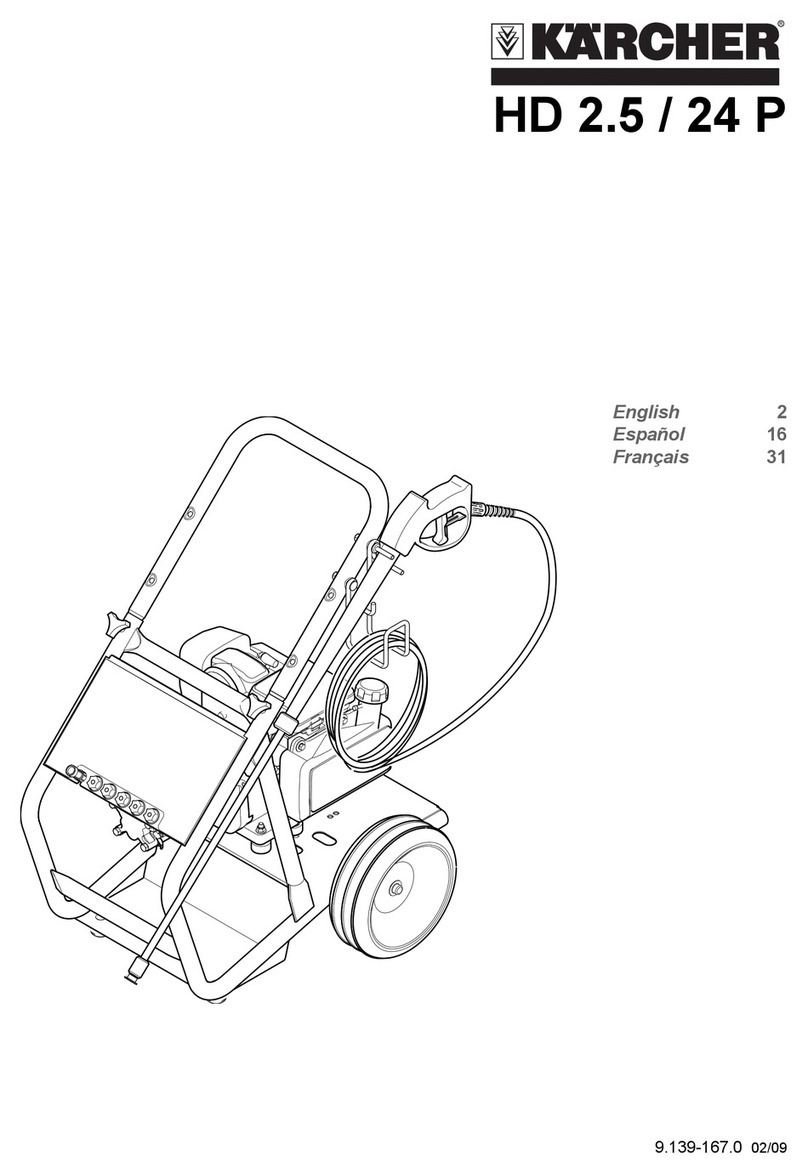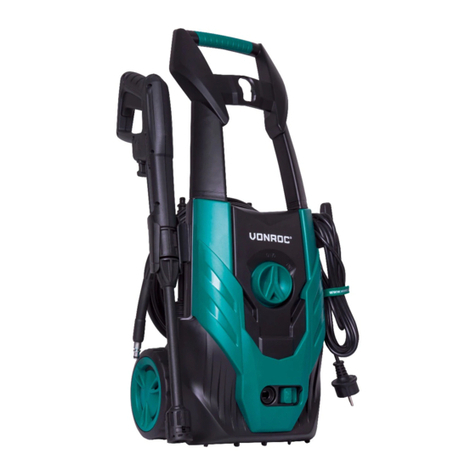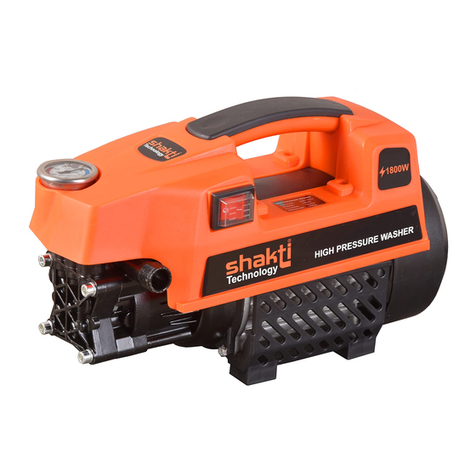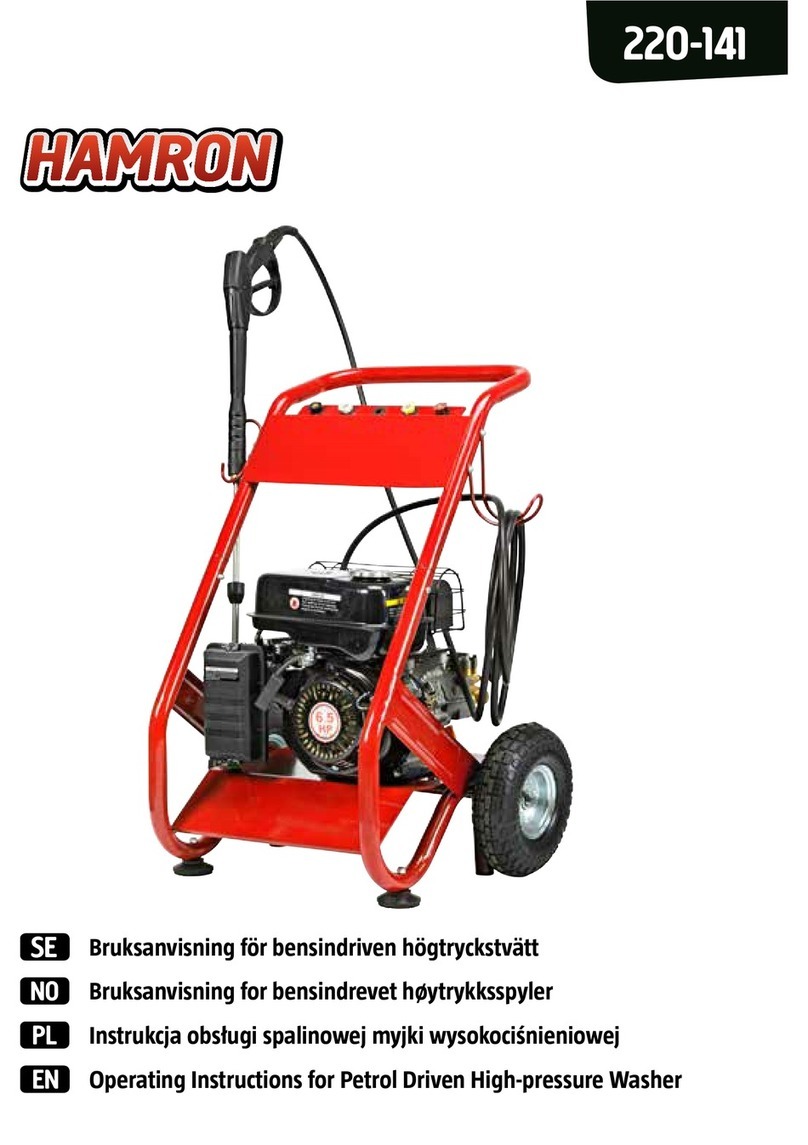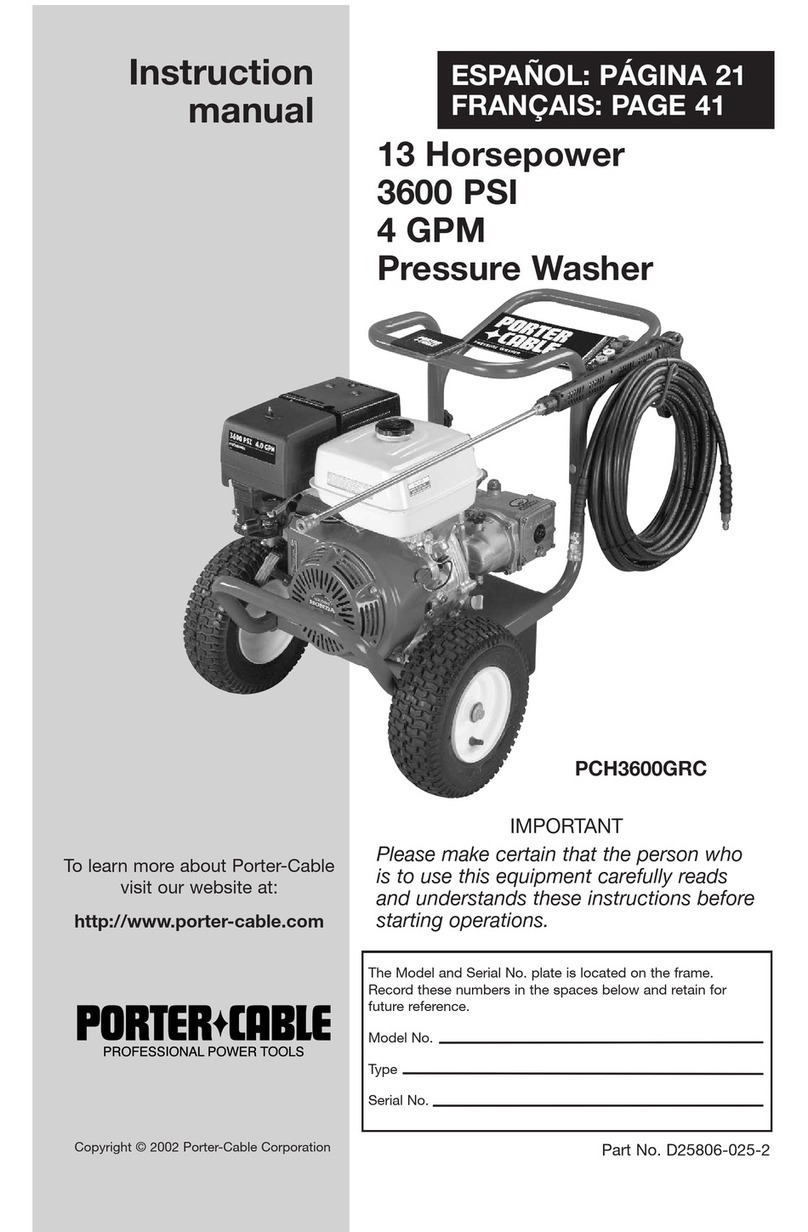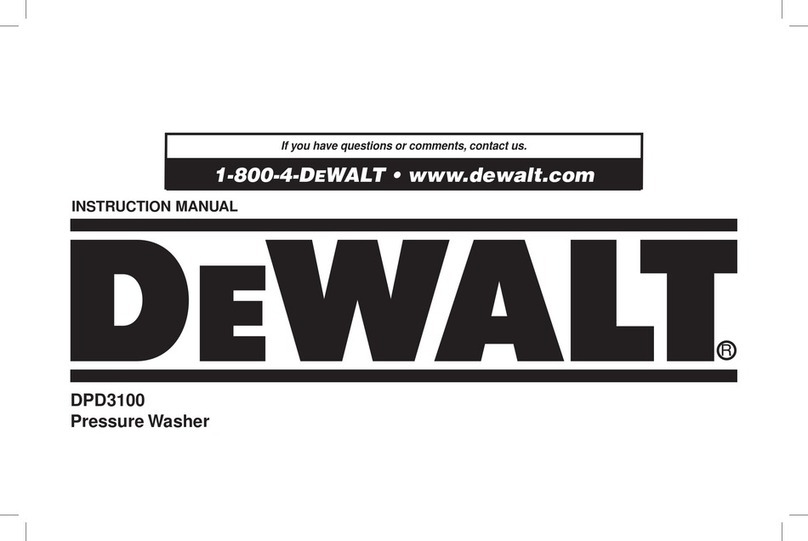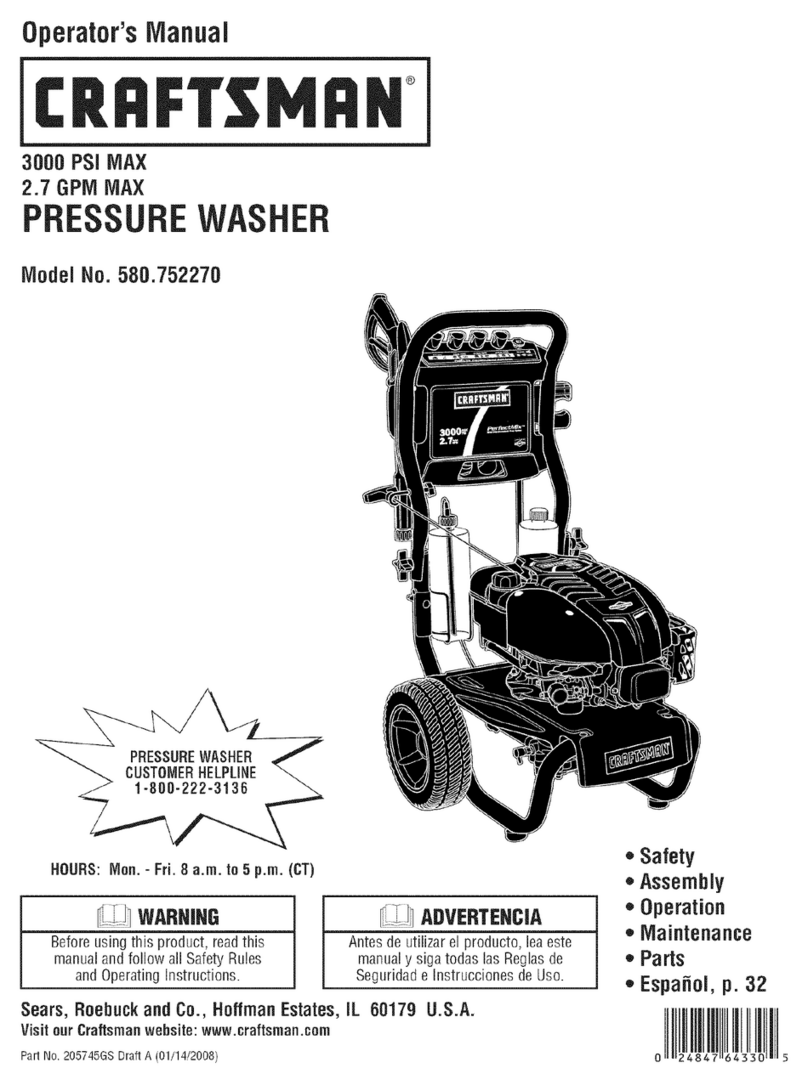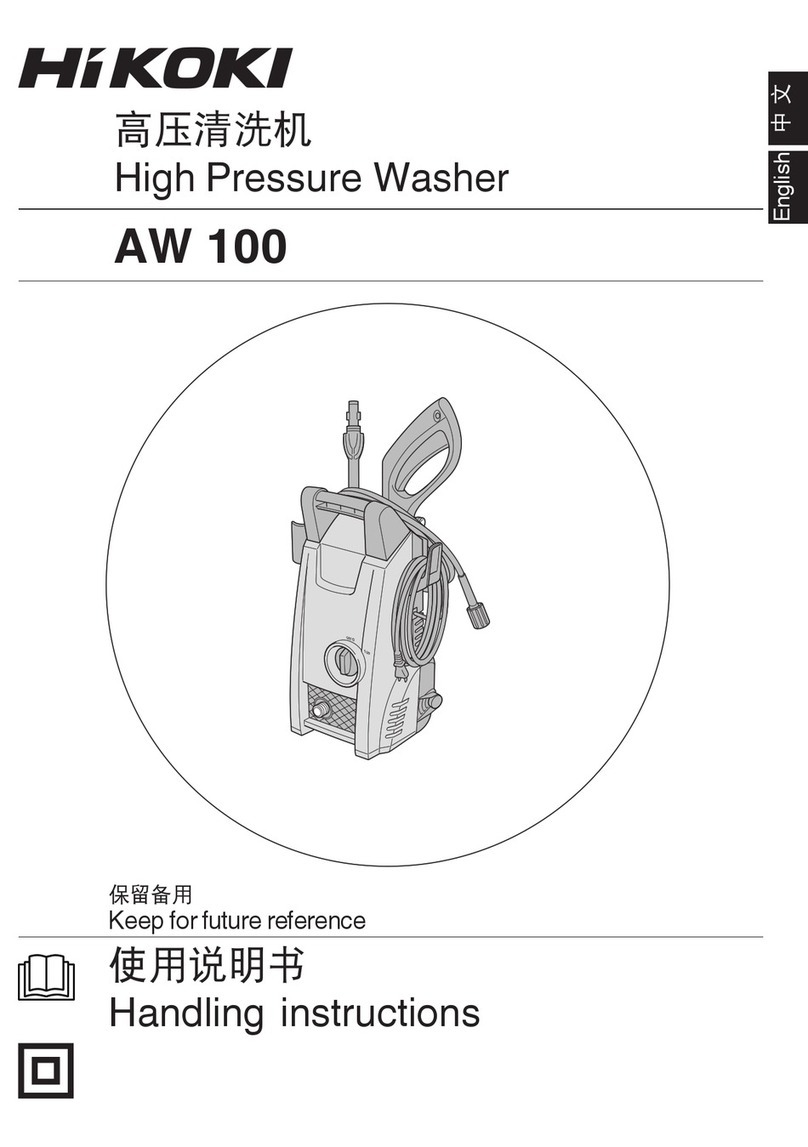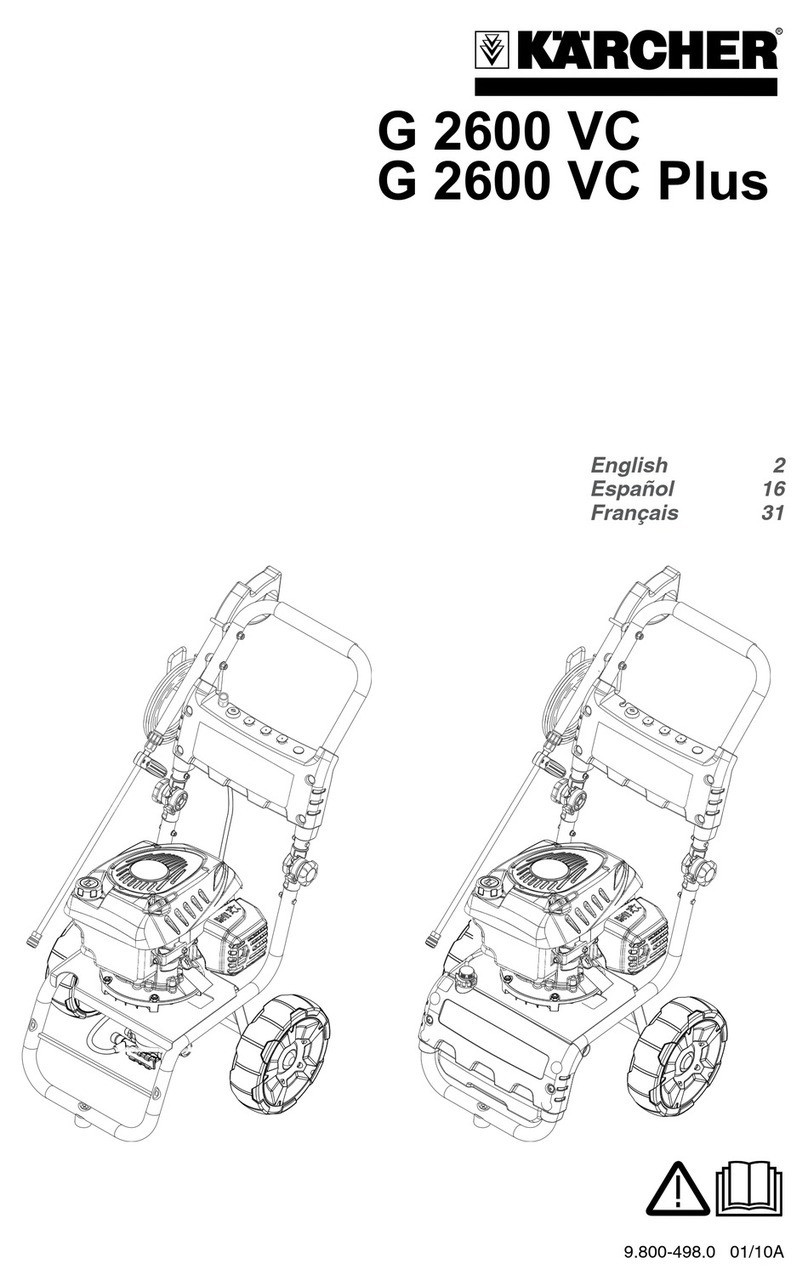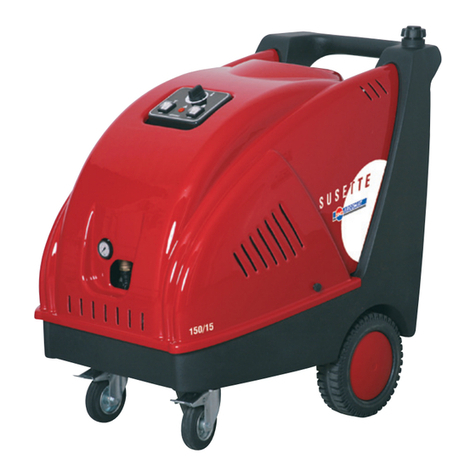
·To ensure appliance safety, use only original replacement
parts from the manufacturer or those approved by
WARNING! During cleaning, maintenance or when
replacing parts,the machines must be disconnected from its
power source by removing the battery.
WARNING! High pressure hoses, fittings, and
coupling are Important for the safe operation of the appliance.
Use only hoses , fitting, and coupling recommended by the
WARNING! Electric shock hazard-Before
starting up your machine, please check it carefully for any
defects, If you find any, do not start your machine and
contact your distributor.
IMPORTANT: Only use water without any impurities, if
there is a risk of running sand into inlet water(i.e.from your
own well), an additional filter should be installed.
·Check for damage parts-Do not use appliance if any
important parts of the appliance is damaged(e.g.safety
devices, high pressure hoses, trigger gun).
·This cordless high pressure power washer must not be used
at the temperature below 32℉(0℃).
·Keep the machine on a stable, flat surface during operation,
handling, transport, and storage. Sudden overturn of the
machine can cause bodily injury.
·In the event of an accident or breakdown, switch off the
machine immediately.(If contact with detergent occurs,
rinse with an abundance of clean water).
We pay a great deal of attention to the design of every battery
pack to ensure that we supply you with batteries that are safe,
durable and have a high energy density. The battery cells have
range of safety devices. Each individual cell is initially
formatted and its electrical characteristic curves are recorded.
This data is then used exclusively to be able to assemble the
best possible battery packs.
Despite all the safety precautions, caution must always be
exercised when handling batteries. The following points must
be obeyed at all times to ensure safe use. Safe use can only be
guaranteed if undamaged cells are used. Incorrect handling of
the battery pack can cause cell damage.
IMPORTANT! Analyses confirm that incorrect use and poor
care of high performance batteries are the main factors
responsible for personal and/or product damage.
WARNING! Use only approved battery for
replacement; other batteries may damage the pressure
washer and cause it to malfunction, which can lead to
CAUTION! To reduce the risk of injury,
charge the lithium-ion battery pack only in its
designated lithium-ion charger.Other type of charges
present risk of fire,personal injury and damage. Do not
wire a battery pack to a power supply plug or car
cigarette lighter. Such misuse will permanently disable
or damage the battery pack.
·Avoid dangerous environments-Do not charge the
battery pack in rain, snow and in damp or wet location.
Do not use the battery pack or charge in the presence
of explosive atmosphere(gaseous fumes, dust or
flammable materials) because sparks may be
generated when inserting or removing the battery pack,
which could lead to a fire.
·Charge in a well-ventilated area- Do not block the
charge vents. Keep them clear to allow for proper
ventilation. Do not allow smoking or open flames near
a charging battery pack. Vented gases may exploded.
Note: The safe temperature range for the battery is -4
℉(-20℃to 113℉(45℃). Do not charge the battery
outside in freezing weather, charge at room
·Maintain charge cord- When unplugging the charge,
pull the plug, not the cord, from the receptacle to
reduce the risk of damage to the electrical plug and
cord. Never carry the charge by its cord or yank it by
the cord to disconnect it from receptacle. Keep the cord
away from the heat, oil and sharp edges. Make sure the
cord will not be stepped on, tripped over or subject to
damage or street when the charge is in use. Do not use
the charge with a damaged cord or plug. Replace a
damaged charge immediately.
·Do not use an extension cord unless it is absolutely
necessary-Using the wrong, damaged or improperly
wired extension cord poses a risk of fire and electric
shock. If an extension cord must be used, plug the
charger into a properly wired 16 gauge or larger
extension cord with the female plug matching the male
plug with the female plug matching the male plug on
the charger. Make sure that the extension cord is in
good electrical condition.
·Charger- The charger must be plugged into an
appropriated receptacle.
